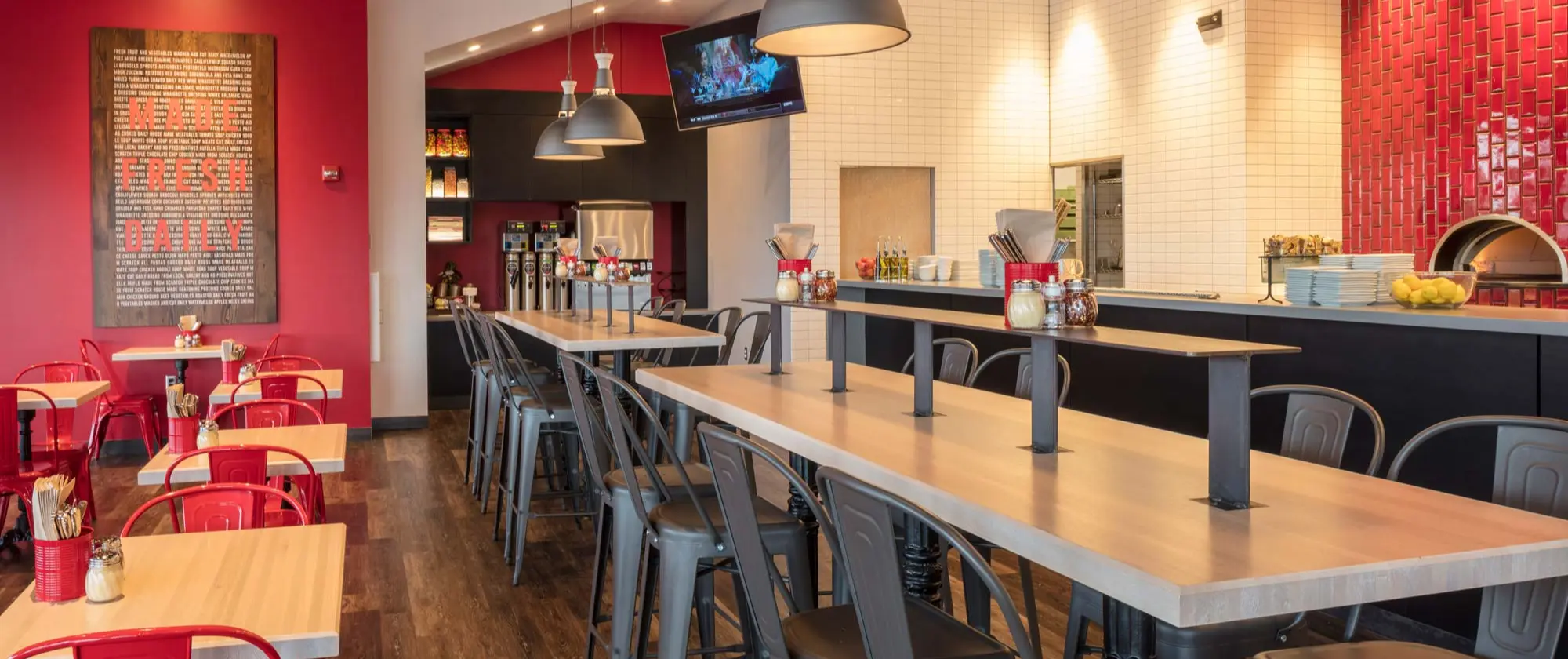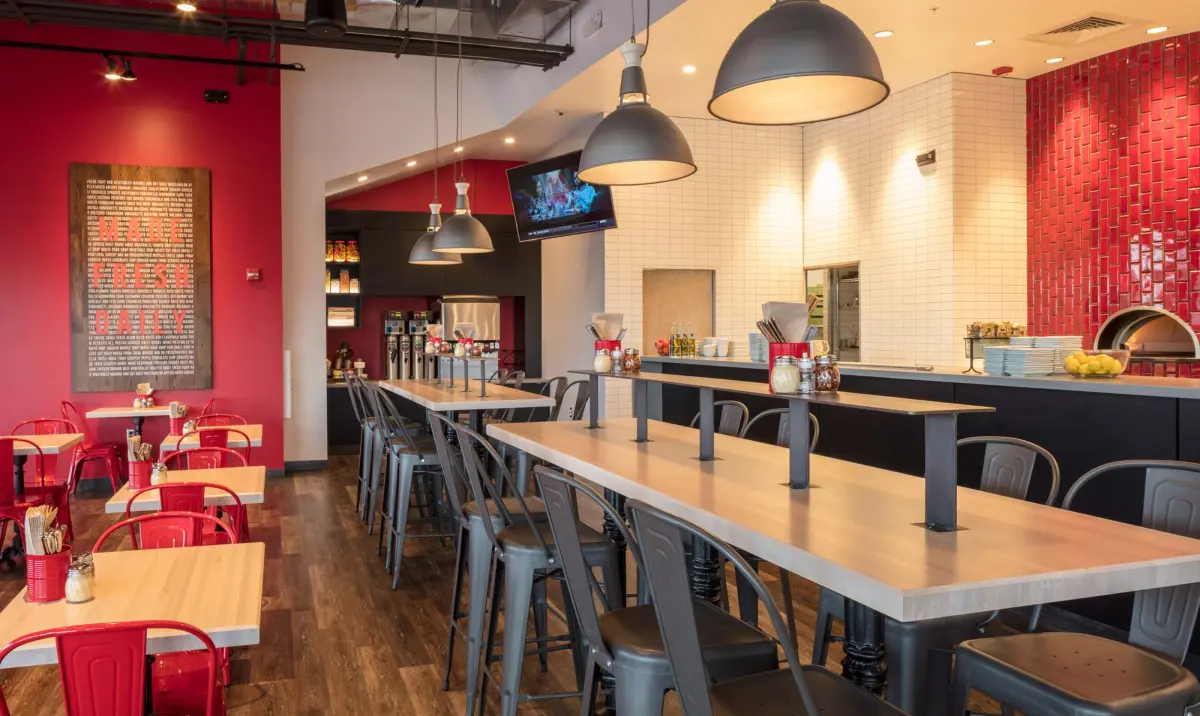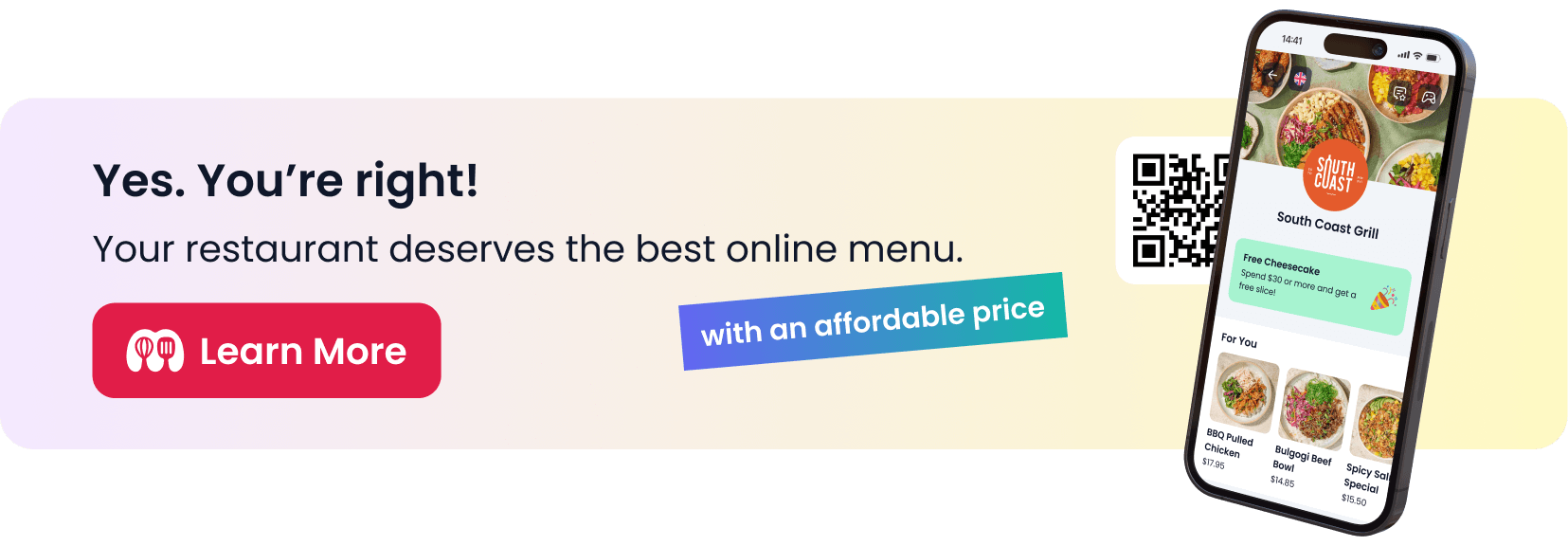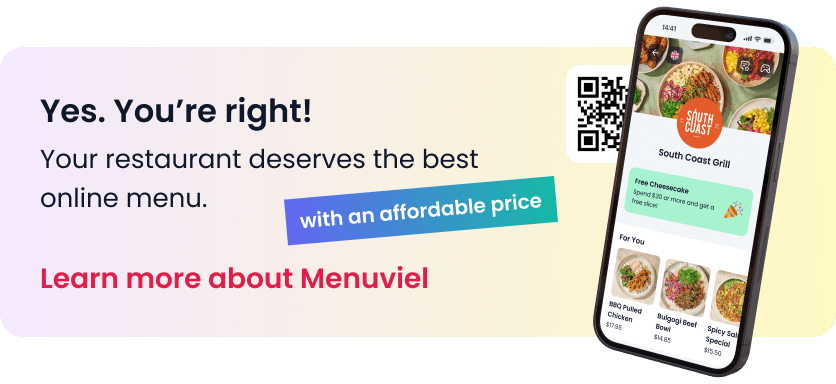

Fast Casual vs. Fast Food Restaurants: Key Differences
In the ever-evolving world of dining, two dominant concepts have taken center stage: fast casual and fast food restaurants. While they may seem similar on the surface—both offering quick service and convenience—they cater to different audiences with distinct dining experiences. As customer preferences shift towards healthier options, better quality, and more engaging atmospheres, understanding the nuances between these two restaurant types is crucial for business owners and aspiring restaurateurs.
Fast food restaurants have long been the go-to choice for quick, budget-friendly meals, known for their standardized menus and operational efficiency. On the other hand, fast casual restaurants offer a more upscale alternative, combining the speed of fast food with the quality and ambiance of casual dining. These differences extend beyond customer experience, influencing everything from pricing and marketing strategies to operational requirements.
This guide will dive deep into the defining traits of fast casual and fast food establishments, helping you identify the right fit for your business or dining preferences. Whether you’re a restaurant owner seeking to understand industry trends or a customer curious about these popular dining styles, this comprehensive exploration will answer your questions and more.
What Are Fast Casual Restaurants?
Fast casual restaurants have emerged as a bridge between fast food and traditional casual dining. They cater to customers who want quick service without compromising on food quality or dining experience. This segment has grown rapidly in recent years, driven by changing consumer preferences and the demand for healthier, fresher options.
Definition of Fast Casual Dining
Fast casual dining blends the convenience of fast food with the elevated experience of casual dining. These establishments are characterized by:
- High-quality ingredients: Often fresher and minimally processed compared to fast food.
- Customizable menu options: Allowing customers to tailor meals to their preferences.
- Modern, welcoming ambiance: Sleek interiors and a comfortable dining environment.
- No table service: Food is ordered at the counter, but customers typically dine in a relaxed setting.
Fast casual restaurants emphasize fresh, high-quality food served quickly in a pleasant environment, creating a unique appeal for customers seeking a step above fast food.
Examples of Popular Fast Casual Brands
The fast casual segment includes several globally recognized brands that have successfully captured the market by focusing on quality and customer experience:
- Chipotle Mexican Grill: Known for its commitment to sustainably sourced ingredients and customizable burritos and bowls.
- Panera Bread: Offers a wide variety of freshly baked goods, soups, and salads with a focus on health-conscious eating.
- Sweetgreen: A leader in the salad-focused niche, emphasizing farm-to-table practices.
- Cava: Mediterranean-inspired fast casual dining with vibrant, customizable menu options.
These brands exemplify the fast casual philosophy by prioritizing fresh, customizable meals and creating an inviting dining environment that appeals to health-conscious and quality-driven customers.
What Are Fast Food Restaurants?
Fast food restaurants are a cornerstone of the global dining industry, renowned for their quick service, affordability, and standardized menus. These establishments have revolutionized how people eat out, offering meals that cater to busy lifestyles. Despite their simplicity, fast food chains have become cultural icons and influential players in the restaurant sector.
Definition of Fast Food Dining
Fast food restaurants are built around the concept of speed, efficiency, and accessibility. Key characteristics include:
- Standardized menus: Offering consistent meals across all locations.
- Quick preparation times: Emphasizing convenience for customers on the go.
- Affordable pricing: Keeping meals within reach of a broad audience.
- Self-service or minimal interaction: Orders are typically placed at the counter or drive-thru, with limited staff-customer engagement.
Fast food establishments prioritize convenience, making them a preferred choice for individuals and families seeking a quick, budget-friendly meal.
Fast food’s core appeal lies in its efficiency and affordability, meeting the needs of time-strapped customers looking for consistent and accessible dining options.
Examples of Popular Fast Food Brands
Fast food chains are household names worldwide, recognized for their iconic branding and consistent offerings:
- McDonald’s: The global leader in fast food, famous for its burgers, fries, and expansive menu options.
- Burger King: Known for its flame-grilled burgers and the “Have it Your Way” campaign.
- KFC (Kentucky Fried Chicken): A pioneer in fried chicken with a secret blend of herbs and spices.
- Taco Bell: Offers Mexican-inspired dishes, including tacos, burritos, and nachos, at an affordable price.
These brands have built their success on a foundation of operational consistency, rapid service, and strong marketing campaigns, making them staples of the fast food industry.
Comparing Dining Experiences
The dining experience is a critical differentiator between fast casual and fast food restaurants. While both prioritize efficiency, they offer vastly different atmospheres, service styles, and customer engagement. This section explores how these elements create unique experiences for diners.
Atmosphere and Ambience
The atmosphere in fast casual and fast food restaurants varies significantly, reflecting their target audiences and brand identities.
- Fast Casual Restaurants:
- Designed with modern, upscale interiors featuring warm lighting and comfortable seating.
- Often incorporate natural elements like wooden finishes and greenery for an inviting ambiance.
- Encourage customers to dine in and enjoy their meal at a leisurely pace.
- Fast Food Restaurants:
- Focus on practicality with minimalistic designs and bright colors that promote quick turnover.
- Seating is functional and often geared towards efficiency rather than comfort.
- Typically include vibrant, attention-grabbing branding and décor.
Fast casual restaurants create a relaxed, welcoming environment, while fast food establishments prioritize functionality and rapid customer flow.
Service Style
The service approach in each type of restaurant is tailored to meet customer expectations for speed and convenience.
- Fast Casual Restaurants:
- Customers order at the counter, but food preparation may take slightly longer due to fresher ingredients.
- Often include additional touches, like delivering food to tables or offering digital kiosks for seamless ordering.
- Staff are trained to provide a more engaging and personalized experience.
- Fast Food Restaurants:
- Emphasize speed, with a focus on quick order placement and food delivery, often through counters or drive-thrus.
- Self-service stations for drinks and condiments are common to minimize staff interaction.
- Designed for customers who prioritize time savings over personalization.
Fast casual dining offers a blend of efficiency and engagement, while fast food prioritizes ultra-quick service with minimal interaction.
Menu and Food Quality Differences
One of the most notable distinctions between fast casual and fast food restaurants lies in their menus and food quality. These differences reflect each type’s target audience, pricing structure, and operational priorities.
Menu Variety
The breadth and depth of menu options differ significantly between fast casual and fast food establishments.
- Fast Casual Restaurants:
- Feature diverse and customizable menus with options for various dietary preferences (e.g., vegetarian, vegan, gluten-free).
- Offer globally inspired cuisines like Mediterranean bowls, Asian fusion, or gourmet salads.
- Seasonal menu updates and limited-time offerings are common to keep the menu fresh and engaging.
- Fast Food Restaurants:
- Focus on core menu items like burgers, fries, and fried chicken, with occasional variations for regional tastes.
- Customization is usually limited to basic add-ons or removing ingredients.
- Menu updates are infrequent, often tied to promotional campaigns or new product launches.
Fast casual menus cater to adventurous, health-conscious eaters, while fast food menus emphasize simplicity and consistency.
Ingredient Sourcing and Preparation
The sourcing and preparation of ingredients are key factors that set these two dining styles apart.
- Fast Casual Restaurants:
- Prioritize fresh, high-quality ingredients, often touting organic or locally sourced items.
- Meals are prepared to order, giving customers a sense of freshness and quality.
- Focus on minimally processed foods with an emphasis on flavor and presentation.
- Fast Food Restaurants:
- Rely on pre-prepared, frozen, or processed ingredients to maximize speed and efficiency.
- Standardized recipes ensure uniformity across locations but may compromise freshness.
- Preparation often involves assembly-line processes to handle high customer volumes.
Fast casual restaurants highlight quality and freshness, while fast food chains emphasize speed and cost-effectiveness in sourcing and preparation.
Health and Nutrition Considerations
Health-conscious dining is a growing trend that has influenced the menus of both fast casual and fast food restaurants, albeit in different ways.
- Fast Casual Restaurants:
- Emphasize nutrient-dense meals with options like whole grains, lean proteins, and fresh vegetables.
- Clearly label items for dietary concerns, such as allergens or calorie counts.
- Often appeal to health-conscious diners with options like smoothie bowls or salad-based entrees.
- Fast Food Restaurants:
- Offer healthier options like salads or grilled items, but these are typically a smaller portion of the menu.
- Focus primarily on indulgent, comfort-style foods like burgers, fries, and milkshakes.
- Limited transparency on ingredient sourcing or nutritional content compared to fast casual establishments.
Fast casual restaurants attract health-focused customers with nutritious, transparent offerings, while fast food focuses on indulgence and convenience.
Pricing and Affordability
Pricing and affordability are major differentiators between fast casual and fast food restaurants. These differences stem from the quality of ingredients, service styles, and target demographics.
Cost Per Meal
The average cost of a meal varies significantly between these two dining styles.
- Fast Casual Restaurants:
- Meals typically range from $8 to $15 per person, reflecting the higher quality of ingredients and enhanced dining experience.
- Customizable options and premium offerings, such as organic or locally sourced ingredients, often increase the price.
- Customers perceive the cost as justified by the quality, freshness, and ambiance.
- Fast Food Restaurants:
- Meals generally cost between $5 to $8 per person, making them accessible to a wider audience.
- Value menus and combo deals are common strategies to keep prices low.
- Efficiency in sourcing and preparation helps maintain affordability without compromising profit margins.
Fast casual restaurants offer a higher price point aligned with quality, while fast food emphasizes affordability and accessibility.
Customer Segments by Budget
Both fast casual and fast food restaurants target specific customer segments based on their pricing models.
- Fast Casual Restaurants:
- Attract middle- to upper-income customers willing to pay more for better quality and healthier meals.
- Popular among millennials and Gen Z diners who value transparency, sustainability, and customization.
- Ideal for those seeking a dining experience that balances affordability with upscale features.
- Fast Food Restaurants:
- Appeal to budget-conscious individuals, families, and large groups looking for quick, low-cost meals.
- Heavily frequented by customers prioritizing convenience over food quality, such as commuters and students.
- Offer broad accessibility, catering to virtually all demographics due to their affordability.
Fast casual attracts quality-conscious customers with higher spending power, while fast food focuses on budget-friendly convenience for a broader audience.
Marketing and Branding Strategies
Marketing and branding play pivotal roles in distinguishing fast casual and fast food restaurants. Each model uses unique strategies to attract and retain its target audience, leveraging a mix of traditional and digital platforms.
Target Audience Appeal
Understanding the preferences of their audience shapes the marketing strategies of fast casual and fast food restaurants.
- Fast Casual Restaurants:
- Emphasize health-conscious messaging with terms like “fresh,” “organic,” and “sustainable.”
- Highlight their commitment to quality ingredients and customization options.
- Use storytelling to connect emotionally, such as showcasing partnerships with local farms or sustainable practices.
- Social media campaigns focus on aesthetic appeal, sharing photos of beautifully plated meals and inviting interiors.
- Fast Food Restaurants:
- Target mass-market appeal by promoting affordability and convenience, often using slogans emphasizing speed.
- Frequent use of celebrity endorsements and brand mascots to enhance relatability and recognition.
- Focus on limited-time offers like value deals or new product launches to attract impulse purchases.
- Use high-visibility advertising through TV, billboards, and radio, ensuring reach across all demographics.
Fast casual marketing leans on quality and lifestyle alignment, while fast food focuses on universal appeal and affordability.
Loyalty Programs and Promotions
Customer retention strategies differ in scope and execution for fast casual and fast food establishments.
- Fast Casual Restaurants:
- Offer digital loyalty programs with features like points, rewards, and birthday discounts.
- Use mobile apps to provide personalized promotions based on customer preferences and order history.
- Focus on building a relationship with customers through email newsletters and exclusive deals for repeat visitors.
- Fast Food Restaurants:
- Rely heavily on frequent promotions like “2-for-1 deals,” combo meals, and value menus to drive sales.
- Offer instant gratification rewards, such as free items or discounts for specific purchases.
- Loyalty programs are often simple, focusing on easy sign-ups and widespread participation.
Fast casual restaurants prioritize personalized, long-term relationships, while fast food uses widespread promotions to drive immediate sales.
Operational Insights
The operational frameworks of fast casual and fast food restaurants differ significantly, reflecting their distinct business models and customer expectations. From ownership structures to cost management, these insights are crucial for understanding how each type functions.
Business Models
The ownership and operational structure of fast casual and fast food restaurants influence their scalability and management strategies.
- Fast Casual Restaurants:
- Often operated as independent businesses or small regional chains.
- Focus on maintaining brand integrity, which may limit the pace of expansion.
- Franchising exists but is less common, as owners prioritize quality control over rapid growth.
- Fast Food Restaurants:
- Heavily reliant on franchise models, enabling rapid expansion and global presence.
- Standardized operations across locations ensure consistent customer experiences.
- Franchisees benefit from established branding, supply chains, and operational playbooks.
Fast casual restaurants often trade scalability for quality, while fast food chains excel in rapid, standardized expansion.
Operational Costs
The costs associated with running fast casual and fast food establishments vary due to differences in labor, ingredients, and infrastructure.
- Fast Casual Restaurants:
- Higher labor costs due to the need for skilled staff who handle fresh ingredients and provide a more personalized experience.
- Ingredient costs are higher because of the emphasis on fresh, organic, or locally sourced items.
- Invest more in interior design and technology, such as digital kiosks or mobile app integrations.
- Fast Food Restaurants:
- Lower labor costs as staff primarily focus on assembly-line food preparation and counter service.
- Ingredients are often purchased in bulk at lower prices due to standardized menus and supply chains.
- Operational focus is on efficiency, with streamlined kitchen setups and minimal investment in ambiance.
Fast casual restaurants face higher operational costs driven by quality and experience, while fast food establishments thrive on efficiency and cost minimization.
Pros and Cons of Each Type
Both fast casual and fast food restaurants have unique strengths and challenges that cater to different customer needs and business goals. Understanding the pros and cons of each can help you determine which model aligns better with your objectives.
Fast Casual Strengths and Weaknesses
Strengths:
- High-quality appeal: Fresh ingredients and customizable options attract health-conscious and quality-focused customers.
- Premium dining experience: Offers an inviting ambiance that encourages customers to dine in and enjoy their meals.
- Higher profit margins: Customers are often willing to pay more for better food and an upscale atmosphere.
- Brand differentiation: Ability to stand out by focusing on sustainability, local sourcing, or niche cuisines.
Weaknesses:
- Higher operational costs: Elevated expenses for ingredients, labor, and decor can reduce profitability.
- Longer preparation times: Freshly made meals can take longer to serve, which may frustrate customers seeking speed.
- Limited scalability: Maintaining quality while expanding can be challenging compared to fast food franchises.
Fast casual restaurants thrive on quality and ambiance but face challenges in scalability and operational costs.
Fast Food Strengths and Weaknesses
Strengths:
- Speed and convenience: Quick service and widespread locations make fast food an easy choice for busy customers.
- Cost-effectiveness: Low meal prices attract budget-conscious diners and families.
- High scalability: Franchising and standardized operations enable rapid expansion and brand recognition.
- Efficient operations: Streamlined processes ensure consistency and minimize labor costs.
Weaknesses:
- Perceived low quality: Heavy reliance on processed ingredients may deter health-conscious consumers.
- Limited customization: Standardized menus may not appeal to customers seeking variety or dietary-specific options.
- Declining popularity among younger demographics: Millennials and Gen Z often favor brands emphasizing sustainability and fresh food.
Fast food restaurants excel in efficiency and accessibility but may struggle to meet evolving consumer preferences for quality and health.
Trends Shaping the Industry
The dining industry is rapidly evolving, influenced by changing consumer preferences and technological advancements. Both fast casual and fast food restaurants are adapting to these trends to stay competitive and meet the demands of modern diners.
Growing Demand for Sustainability
Sustainability is a critical focus for both fast casual and fast food restaurants, though their approaches may differ.
- Fast Casual Restaurants:
- Often highlight environmentally friendly practices, such as using locally sourced ingredients and biodegradable packaging.
- Promote farm-to-table concepts and partnerships with sustainable suppliers.
- Appeal to eco-conscious consumers by reducing food waste and carbon footprints.
- Fast Food Restaurants:
- Gradually incorporating sustainability through initiatives like recycled packaging and renewable energy usage.
- Some brands are pledging to reduce single-use plastics or invest in plant-based menu items.
- Efforts are typically driven by large-scale corporate commitments to environmental responsibility.
Sustainability initiatives are increasingly influencing customer loyalty and brand perception, particularly among younger demographics.
Role of Technology in Both Sectors
Technology is reshaping the way fast casual and fast food restaurants operate and interact with customers.
- Fast Casual Restaurants:
- Leverage digital ordering platforms and apps to enhance the customer experience.
- Utilize advanced POS systems for smoother operations and detailed analytics.
- Invest in innovative tools like self-service kiosks, personalized marketing, and online loyalty programs.
- Fast Food Restaurants:
- Pioneers of drive-thru and mobile ordering systems for unmatched convenience.
- Expanding delivery services through partnerships with platforms like Uber Eats and DoorDash.
- Introducing AI-powered tools to optimize kitchen workflows and predict customer trends.
Both sectors are embracing digital transformation, with fast food emphasizing efficiency and fast casual focusing on personalization and innovation.
Which Model Is Right for You?
Choosing between a fast casual and fast food restaurant model depends on your business goals, resources, and target audience. Both models have unique advantages and challenges, so aligning them with your vision is crucial for success.
Choosing Based on Business Goals
Your business objectives will play a significant role in determining the ideal restaurant model.
- Fast Casual Restaurants:
- Ideal for entrepreneurs focused on quality, innovation, and creating a memorable dining experience.
- Suitable for those aiming to build a unique, niche brand with loyal customers willing to pay premium prices.
- Best for owners who are comfortable managing higher operational costs to deliver better quality.
- Fast Food Restaurants:
- Perfect for business owners looking for high scalability and broad market appeal.
- Aligns with goals focused on maximizing efficiency and generating consistent revenue.
- A good fit for those who prefer established franchise models with proven success.
Fast casual is the way to go if your goal is to offer high-quality dining, while fast food excels in efficiency and expansion.
Aligning with Target Customers
Understanding your target audience’s preferences is key to making the right decision.
- Fast Casual Restaurants:
- Attract customers who value freshness, health-conscious options, and a welcoming dining environment.
- Popular among millennials and Gen Z, who prioritize sustainability and transparency.
- Ideal for urban or suburban areas with higher income demographics.
- Fast Food Restaurants:
- Draw budget-conscious customers seeking quick and affordable meals.
- Appeal to families, students, and individuals looking for convenience.
- Work well in high-traffic locations like highways, airports, or busy commercial areas.
Fast casual caters to quality-driven, younger audiences, while fast food appeals to those prioritizing speed and affordability.
Key Takeaways
Understanding the differences between fast casual and fast food restaurants is essential for making informed decisions as a business owner or a consumer. Here are the most important points to remember:
- Dining Experience: Fast casual offers a more upscale and relaxed atmosphere, while fast food focuses on speed and functionality.
- Menu and Food Quality: Fast casual emphasizes fresh, high-quality ingredients and customizable options, whereas fast food prioritizes efficiency and standardized offerings.
- Pricing: Fast casual meals are generally pricier, catering to quality-conscious diners, while fast food targets affordability for mass appeal.
- Marketing Strategies: Fast casual highlights health, sustainability, and personalization, while fast food leans on value deals, widespread reach, and celebrity endorsements.
- Operational Insights: Fast casual businesses face higher operational costs and limited scalability, while fast food excels in streamlined operations and franchise-friendly models.
- Trends: Both sectors are embracing sustainability and technology, with fast casual focusing on personalization and fast food driving efficiency.
- Business Fit: Fast casual suits entrepreneurs aiming for niche, quality-focused brands, while fast food is ideal for those prioritizing scalability and mass market access.
Whether you’re starting a restaurant or deciding where to dine, understanding these distinctions can help you choose the model that aligns with your goals or preferences. Both fast casual and fast food continue to evolve, offering unique opportunities for success in the ever-changing dining industry.
ABOUT THE AUTHOR
Erkin Coban
Your Customers Deserve The Best
And we got Menuviel for them.
The fastest and easy-to-use online QR menu with 12+ unique features. Choose Menuviel and elevate your service quality to the next level.
Use free for the first 30 days.

In This Article

Free AI Tools for Restaurants
TRY NOW ➜

Add preparation time, avoid unwanted tension
Let customers know how long their food will take. Set clear expectations and reduce complaints.





